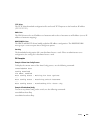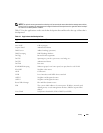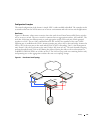
166 Utility
Dependency Upon Other Network Services
The Auto Config process depends upon the following network services:
• A DHCP or BOOTP server must be configured on the network with appropriate services.
• A configuration file for the switch must be available from a TFTP server on the network.
• The switch must be connected to the network.
• A DNS server must contain an IP address to hostname mapping for the TFTP server if the DHCP
server response contains only the hostname for the TFTP server.
• A DNS server must contain an IP address to hostname mapping for the switch if a <hostname>.cfg
file is to be downloaded.
• If a default gateway is needed to forward TFTP requests, IP helper addresses will need to be configured
on the gateway to provide those services.
Other Functions
CLI Scripting
CLI scripting can apply config files. It can be used to manage (view, validate, delete) downloaded config
files, query Auto Config status, and to stop or restart the feature.
Logging
A message is logged for each of the following events:
• Auto Config component receiving a config file name and other options upon resolving an IP address by
DHCP or BOOTP client. The boot options values are logged.
• Auto Config component initiating a TFTP request for a boot (config) file, receiving the file, or timing
out of that request. Filenames and server IP addresses/hostnames are logged.
• Auto Config component initiating a request for a hostname. IP addresses and resolved hostnames are
logged.
• Auto Config component initiating a TFTP request for a "<hostname>.cfg" file, receiving the file, or
timing out of that request. Filenames, server IP addresses, and hostnames are logged.
• Applying a config script.
•Failure of the CLI scripting utility to apply a config file.
SIM
The SIM stores the hostname of the switch. After the DNS client resolves the hostname, it configures
the SIM with the hostname. The Auto Config component queries the SIM to obtain the hostname. The
hostname is used for "<hostname>.cfg" file request from TFTP. This hostname is also displayed as the
CLI prompt.


















